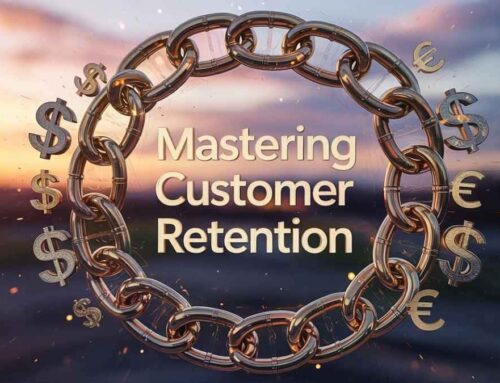
Customer Feedback 101
In today’s fast-paced digital world, Customer Feedback isn’t just a courtesy, it’s an essential tool for business growth. Every review, comment or star rating a customer leaves provides a wealth of insights that can help refine your strategies, boost your reputation and ultimately drive revenue.
In the U.S. market, where competition is fierce, mastering customer feedback and feedback analysis can be the game-changer for your business.
But how can you use this feedback effectively? What strategies work best for converting reviews into actionable growth insights? Let’s dive into the power of customer feedback and discover how you can use it to fuel your business success.
Why Customer Feedback Matters More Than Ever
Consider this: When was the last time you purchased a product or service without first checking the reviews? For most people, reviews have become a crucial part of the decision-making process.
In fact, studies show that 93% of customers read online reviews before making a purchase, underscoring the influence of feedback in the consumer journey.
Customer feedback is more than just words on a page, it’s a window into your customers’ minds. Reviews tell you what’s working, where there are gaps and how you can improve. Businesses that actively listen and act on customer feedback are the ones that stand out, build loyalty and achieve growth.
The Impact of Customer Feedback on U.S. Business Growth
The U.S. business landscape is incredibly diverse, with brands ranging from small local shops to global corporations. But one thing remains constant: customers have options.
Businesses that prioritize feedback analysis not only meet customer expectations but also exceed them. They create a responsive, customer-focused experience that encourages repeat business and word-of-mouth referrals.
Here’s how customer feedback can drive your business growth:
- Enhancing Customer Experience: Reviews and feedback pinpoint areas where customers are either thrilled or disappointed. This information is invaluable for improving services and products.
- Building Credibility and Trust: Positive reviews can significantly boost credibility. Consumers are more likely to trust a business with visible, constructive feedback.
- Improving Products and Services: Honest reviews shed light on what customers love and dislike, guiding you in making necessary adjustments.
- Creating Competitive Advantage: Many businesses ignore or underestimate feedback. By prioritizing it, you set yourself apart.
How to Encourage More Customer Feedback
It’s easy to see the value of customer feedback, but how do you encourage more of it? Getting customers to leave reviews can be challenging, so here are some strategies that can help:
Make Feedback Requests Easy and Timely
Timing is everything. Ask for feedback when the customer is most engaged – shortly after a purchase, during a follow-up interaction or through a post-service email. Make sure the process is straightforward. The easier it is for customers to share their experiences, the more likely they are to respond.
Incentivize Honest Reviews
Offering incentives, such as discounts on future purchases or a small reward, can encourage customers to leave feedback. Just ensure that your approach is ethical, focusing on honest reviews rather than solely positive ones.
Engage Customers on Social Media
Social media is a powerful platform for gathering feedback. Encouraging followers to share their experiences in comments, direct messages or reviews on platforms like Facebook, Instagram or Twitter makes it convenient for them to provide feedback in real time.
Analyzing Customer Feedback: Turning Data into Insight
Collecting feedback is just the first step. The real magic happens in Feedback Analysis – taking raw data and turning it into actionable insights that drive your business forward.
Organize Feedback into Categories
To start your feedback analysis, organize responses into categories. These might include product quality, customer service, delivery or pricing. By doing so, you can see patterns in specific areas that need attention.
Use Sentiment Analysis Tools
Sentiment analysis tools, such as those provided by customer feedback software or social media analytics, can identify whether feedback is positive, neutral or negative. This analysis provides a quick overview of customer sentiment and reveals trends over time.
Spotting Patterns and Trends
Look for common phrases, recurring complaints or frequently mentioned praises. By identifying trends, you can address widespread issues, capitalize on strengths and understand your customers’ evolving preferences.
Prioritize Actionable Feedback
Some feedback will be more actionable than others. Focus on insights that have a clear solution or could have a meaningful impact on customer satisfaction. For instance, if customers frequently mention long wait times for support, that’s an issue that can be addressed through staffing or training improvements.
Types of Customer Feedback: Direct, Indirect and Inferred
To fully harness customer feedback, it’s essential to understand the different types of feedback available:
Direct Feedback
Direct feedback is straightforward and explicit. It’s the comments, reviews or surveys where customers openly share their opinions. This type of feedback is often the most actionable, as customers are clear about what they like or dislike.
Indirect Feedback
Indirect feedback is often found in less obvious places. For example, customers might express frustration through social media comments or in conversations with customer service agents. Keeping an eye on these interactions can provide valuable insights.
Inferred Feedback
Inferred feedback comes from analyzing customer behaviors rather than words. For example, if a certain product sees high returns, it may suggest an issue with quality or usability. Customer actions, like how long they stay on a webpage or the frequency of return visits, can offer inferred feedback.
Leveraging Customer Feedback Across Your Business
Customer feedback can benefit nearly every department in your business, from product development to marketing to customer support.
Product Development
When developing or refining products, feedback provides insights into which features customers love and where improvements are needed. Regular feedback analysis can help guide future product development, aligning new releases with customer preferences.
Marketing and Brand Building
Positive reviews and testimonials make powerful marketing assets. Incorporating customer quotes, star ratings or case studies into your campaigns can build trust and attract new customers. Additionally, feedback can reveal the words and phrases customers use to describe your product, helping you tailor your messaging.
Customer Support and Experience
Feedback can help your customer support team improve their service by understanding common pain points or requests. Training agents based on frequent customer feedback makes them better equipped to handle future interactions.
Responding to Feedback: A Key to Building Relationships
Simply gathering feedback isn’t enough; responding to it is equally important. A thoughtful response shows customers you value their opinions and are committed to improvement.
Acknowledge Positive Feedback
For positive reviews, a simple thank you goes a long way. Acknowledging happy customers reinforces their loyalty and encourages them to continue sharing their experiences.
Address Negative Feedback with Empathy
Negative feedback, though challenging, is an opportunity for growth. Responding to it constructively and empathetically can turn a dissatisfied customer into a loyal one. By addressing their concerns directly and offering a resolution, you show customers that their satisfaction matters to you.
How to Monitor Customer Feedback Over Time
Customer feedback should be an ongoing part of your business strategy. Continuously gathering and analyzing feedback helps you stay in tune with your customers’ needs and preferences. Here are a few methods to ensure you’re always listening:
- Feedback Loops: Establish regular check-ins with customers post-purchase or after service completion to gather updated feedback.
- Quarterly Analysis: Review feedback data quarterly to spot trends and measure the impact of any changes you’ve made based on past feedback.
- Customer Advisory Boards: For more in-depth insights, consider establishing a customer advisory board. This small group of loyal customers can provide valuable feedback and guide your strategy.
Tools for Collecting and Analyzing Feedback
Managing feedback can become overwhelming, but technology can help. Here are some popular tools:
- Survey Tools: Tools like SurveyMonkey and Google Forms are great for collecting structured feedback.
- Review Management Software: Platforms like Trustpilot and Yelp help you track and manage reviews across various platforms.
- Social Media Listening Tools: Tools like Sprout Social and Hootsuite allow you to monitor brand mentions and sentiment on social media.
Conclusion: The Power of Customer Feedback in Driving Growth
Customer feedback is a powerful asset in today’s business landscape, especially in the competitive U.S. market. From enhancing customer experience to building trust and improving products, feedback is at the core of sustainable growth.
When you approach feedback as a dialogue, you create a customer-centric culture that sets your business apart. By actively collecting, analyzing and responding to feedback, you pave the way for continued success.
So, what are you waiting for? Start prioritizing Customer Feedback in your business strategy today and watch how it fuels your journey to growth and success.















I really appreciate this post. I’ve been looking all over for this! Thank goodness I found it on Bing. You have made my day! Thank you again!
I’ve recently started a site, the information you provide on this site has helped me greatly. Thank you for all of your time & work.
I’ve been absent for a while, but now I remember why I used to love this blog. Thank you, I will try and check back more frequently. How frequently you update your web site?
I’m truly enjoying the design and layout of your site. It’s a very easy on the eyes which makes it much more pleasant for me to come here and visit more often. Did you hire out a developer to create your theme? Superb work!
It is really a nice and helpful piece of information. I’m happy that you just shared this helpful info with us. Please keep us informed like this. Thank you for sharing.
I adore you for gathering useful info, this post has got me even more info!
I have recently started a website, the information you provide on this web site has helped me greatly. Thanks for all of your time & work.
Admiring the time and energy you put into your blog and in depth information you offer. It’s awesome to come across a blog every once in a while that isn’t the same unwanted rehashed material. Excellent read! I’ve saved your site and I’m adding your RSS feeds to my Google account.
Normally I don’t read post on blogs, but I wish to say that this write-up very compelled me to check out and do it! Your writing style has been surprised me. Thank you, quite nice article.
I really like reading through and I believe this website got some truly useful stuff on it! .
I’m still learning from you, as I’m improving myself. I definitely enjoy reading all that is posted on your website. Keep the stories coming. I enjoyed it!
Hey there, You’ve performed an excellent job. I will certainly digg it and in my view recommend to my friends. I am sure they will be benefited from this site.